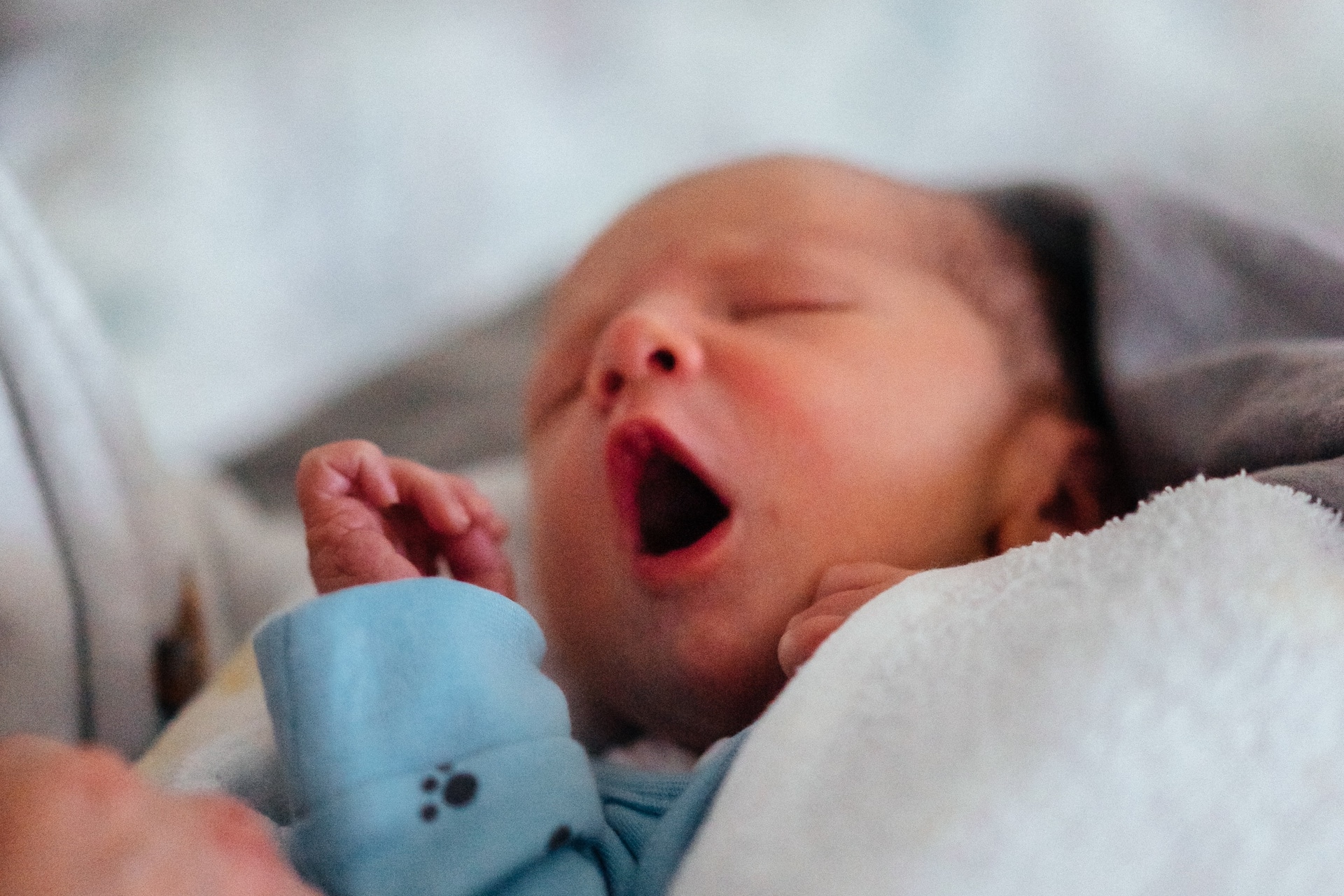Baby
4 min Read
Why Swaddling Newborns Is No Longer Recommended

February 12, 2021
Baby
4 min Read

February 12, 2021

 Originally published in ParentsCanada magazine, May 2015.
Originally published in ParentsCanada magazine, May 2015.
The topic of swaddling newborns has always been a bit contentious. Some people are a hard yes, while others say no. Back when we were expectant parents, my husband and I were eager pupils, listening intently at our prenatal class where various baby basics—including swaddling—were demonstrated. At the hospital, the nurse repeated the lesson on wrapping our newborn into what she called a “baby burrito”. It certainly helped settle our little guy, and we swaddled him for nearly his whole first year. He’s now a healthy eight-year-old who sleeps soundly every night, lanky limbs splayed across his bed.
It seems, however, that the thinking around swaddling newborns is shifting. Hamilton Public Health’s new guidelines stated, “Swaddling should not be demonstrated to clients because there is little research on how to swaddle safely and correctly to prevent the associated risks.” The Registered Nurses’ Association of Ontario (RNAO) also published new best practice guidelines last year that say, “There is currently no evidence on the ‘safe way’ to swaddle an infant, and hence caution regarding swaddling should be expressed with parents/ caregivers.” The Canadian Paediatric Society (CPS) and the Public Health Agency of Canada do not have official statements on swaddling.
So what could go wrong? Didn’t wrapping up my son just keep him feeling warm and cozy, and prevent his involuntary movements from startling himself awake?
According to Dr. Denis Leduc, associate professor of Pediatrics at McGill University Health Centre and director of the newborn nursery of the Royal Victoria Hospital in Montreal, “Proper swaddling of the infant for the first two months of life may promote longer sleep periods; but if misapplied, could be associated with adverse events such as hyperthermia, Sudden Infant Death Syndrome (SIDS) or development of hip dysplasia.”
Hyperthermia (overheating)
This can occur if a baby is bundled up too much, especially in the summer. The CPS suggests using a lightweight blanket, and keeping the baby’s head uncovered at all times.
SIDS
This refers to unexplained death in the first year of life. “A swaddled infant must always be placed supine, or on the back,” says Dr. Leduc. “The concern after two months of age is the baby being able to roll from side to side while swaddled and potentially obstructing the airway.” To further reduce the risk of suffocation, the CPS strongly recommends keeping soft materials such as pillows, comforters, sleep positioners, bumper pads and stuffed animals out of the sleep environment.
HIP Dysplasia
Swaddling raises the possibility of stress being placed on the hip joints if a baby’s legs are frequently secured in a position where they are straight and close together. This can cause hip joint misalignment or even dislocation (known as “developmental dysplasia”). In 2011, the International Hip Dysplasia Institute launched a campaign to promote “hip-healthy swaddling,” where an infant’s top half is wrapped snugly, but the bottom half has the opportunity for movement.
This means that wrapping technique is critical. “The swaddle blanket should allow for movement at the hips and legs, and should be loose enough that a hand can fit between the blanket and the baby’s chest so that breathing is not restricted,” says Dr. Leduc. “But, the wrapping job can’t be so loose that it unravels and the blanket becomes a hazard.”